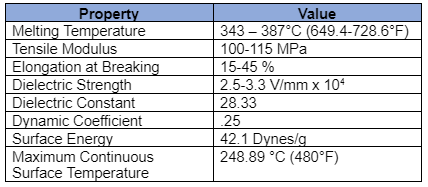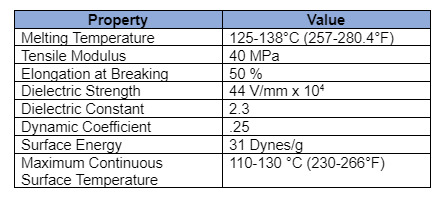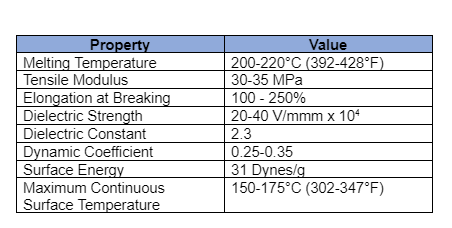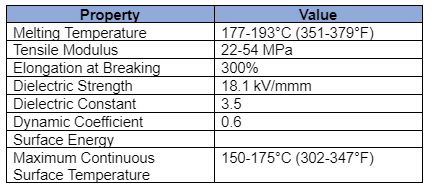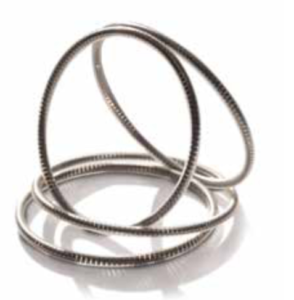Seals used in the oil and gas industry must withstand high temperatures, high pressure, and a chemically hostile environment. The conditions limit the material used to make the seals for this industry. The most common types of materials include
- PTFE
- PEEK
- UHMW
- PCTFE
- Hytrel
Let’s look further into these materials, their benefits, and their limitations.
What is PTFE?
Polytetrafluroro Ethylene (PTFE) is a synthetic fluoropolymer with high-temperature resistance, commonly known as Teflon. It is a hydrophobic, high-molecular-weight polymer consisting of carbon and fluorine.
Benefits of Using PTFE
PTFE is ideal for use in the oil and gas industry as it is resistant to extreme high and low temperatures. In addition, PTFE has a low coefficient and a low dielectric constant. Finally, the hydro resistance nature of the material makes it a top choice for working with steam or heated seawater.
One of the most significant benefits of using PTFE is the resistance to harsh chemicals. It has the broadest chemical resistance of commercial polymers. For example, seals made of this material are resistant to hydrogen sulfide, ferric chloride, ferrous sulfate, hydrochloric acid, and hydrofluoric acid.
Limitations of PTFE
PTFE’s limitations make it unsuitable for some uses. For example, it is sensitive to creep and abrasion, requiring regular maintenance. PTFE also has low radiation resistance and can corrode and produce toxic fumes as it breaks down.
Properties of PTFE
PTFE has a density of 2200 kg/m3 with a melting point of 327°C (620°F). PTFE maintains self-lubrication, strength, and toughness at temperatures down to -268 °C (-450.67°F). Additional properties include:
What Are Some Common Oil and Gas Applications of PTFE?
PTFE is one of the more common materials used in oil and gas seals. For example, O-rings, slipper seals, backup rings, piston rings, and spring-energized seals use PTFE material. In addition, natural gas, cold media seals, bearings, and wear components also use PTFE for manufacturing.
What Is PEEK?
Polyetheretherketone, or PEEK, is a colorless organic thermoplastic semi-crystalline polymer with excellent mechanical and chemical resistance properties. It’s high-resistance to terminal degradation makes it useful in oil and gas environments.
Benefits of using PEEK
As with PTFE, PEEK has several benefits for oil and gas companies. It has good dimensional stability and chemical resistance. In addition, PEEK is resistant to gamma radiation and X-rays.
PEEK has high mechanical strength and is ideal for high vacuum applications. Its robust nature makes it suitable for demanding applications such as the oil and gas industry. It works well in compressors, pumps, and pistons.
Limitations of PEEK
Despite PEEK’s many benefits, there are some drawbacks to using this material. It has low UV light resistance. It is also unsuitable for nitric acid, sulphuric acid, sodium, and halogens. In addition, it is expensive to make and requires high temperatures to process.
Properties of PEEK
PEEK has a high tensile strength of 25000 to 30000 psi. It has a V0 flammability rating of 1.45mm and can withstand high loads for extended periods without residual damage. Additional properties include:
What Are Some Common Oil and Gas Applications of PEEK?
Labyrinth, spring-energized piston seals, backup rings, and seal packing in the oil and gas industry are manufactured using PEEK materials. In addition, it is the material most often chosen for the face seals at the wellhead to contain the high-pressure production of gas and fluid.
What is UHMW Polyethylene?
Ultra-High Molecular-Weight, UHMW, Polyethylene seals are thermoplastic, semi-crystalline materials. It is lightweight with a high-pressure tolerance that makes it ideal for spring energized seals used by the oil and gas industry.
Benefits of Using UHMW Polyethylene
Seals made from UHMW have the benefit of being both abrasion and impact resistant. This self-lubricating material has a low friction coefficient. It withstands extreme colds and high temperatures.
It has a high molecular weight, meaning UHMW is not likely to melt and flow as a liquid. This material cannot be molded by traditional methods, thanks to the high molecular weight. Instead, it is compression molded to make it stronger.
Limitations of UHMW Polyethylene
While UHMW Polyethylene has many benefits for the oil and gas industry, there are some limitations, such as having a lower maximum continuous surface temperature than other materials.
UHMW Polyethylene has a compressive strength of 3000 psi. In addition, it has a maximum safe workload of 1000 psi in some industries. Overload can cause UHMW polyethylene to crack or break.
Properties of UHMW Polyethylene
UHMW polyethylene seals are self-lubricating and have low surface energy, which makes them ideal for the oil and gas industry. Other UHMW polyethylene properties include
What Are Some Oil and Gas Applications for UHMW Polyethylene?
UHMW polyethylene material is used for seals in the oil and gas industry. It is used to make spring energized seals. It is also used for cargo dock impact bumpers and liners.
What is PCTFE?
Polychorotrifluoroethylene (PCTFE) is a chemical compound with a high tensile stretch and good thermal properties. Its chemical-resistant properties make it ideal for use in the oil and gas industry for seals and other components.
Benefits of Using PCTFE
Seals made with PCTFE are nonflammable and heat resistant up to 175°C (347°F). They are also resistant to acetone, hydrochloric acid, sodium peroxide, citric acid, and sulfuric acid. It is water-resistant as well.
PCTFE has a board temperature range with a useful temperature range of -204.4°C (-400°F) to 193.3°C (380°F). When comparing PCTFE vs PTFE, PCTFE is a stronger polymer with better mechanical properties.
Limitations of PCTFE
PCTFE has many beneficial properties for the oil and gas industry. However, some limitations, such as a lower melting point when compared to PEEK or PTFE, might make it less desirable. Seals used in extreme temperatures may need to be a different material.
Additionally, PCTFE is a stiffer material. While this does allow it to maintain its dimensions better, it does break easier than PTFE. Along with being stiffer, it is not as non-stick when compared to PTFE.
Properties of PCTFE
PCTFE has V-0 flammability and a hardness of 67 at 100°C and 80 at 25°C. Other properties include
What Are Some Oil and Gas Applications for PCTFE?
Like PEEK or PTFE, PCTFE is a great material for seals in the oil and gas industry. It’s chemical resistance, which means it can be used in the most volatile industries. Fillers within the seals can enhance some of the properties. PCTFE is also used in component designs and valve seats.
What is Hytrel?
Hytrel is a thermoplastic polyester elastomer that is plasticizer-free. It is a stable material with needed flexibility while handling high temperatures. It is a worthwhile option to consider for the oil and gas industry.
Benefits of Using Hytrel
As a seal material for the oil and gas industry, Hytrel has good chemical resistance. It can withstand exposure to fuel, hydrocarbon solvents, and oil. Additionally, as the material is exposed to higher temperatures, it becomes more rigid. At lower temperatures, it is more flexible.
Hytrel is abrasion resistance. It offers impact and creep resistance to the seals. It also is resilient and excels at providing flex fatigue and tear resistance. Hytrel has a natural spring-like property and has low hysteresis.
Limitations of Hytrel
As there are several models of Hytrel, only a few are best for use in seals. Hytrel 4556, 4056,4068,4069, and 6356 are the ones that work best. However, these don’t always work well in the oil field, so you should know which ones to look for.
Properties of Hytrel
Hytrel has V-0 flammability and a hardness of 67 at 100°C and 80 at 25°C. Other properties include
What Are Some Oil and Gas Applications for Hytrel?
Hytrel is useful as a seal material in the oil and gas industry. As it is resistant to many chemicals, including hydrocarbon solvents, it is ideal for hazardous conditions.
Which Seal Type is Best for the Oil and Gas Industry?
Each seal type has its uses and benefits for the oil and gas industry. However, the best options are PEEK, UHMW, PCTFE, and Hytrel. It is because they have the best physical properties to withstand the harsh conditions in the oil and gas field.
At Advanced EMC Technologies, we offer custom-engineered sealing systems that provide reliable sealing solutions. Our seals perform under high temperatures, high pressure, and chemically hostile environments. Contact us for more information.
Seals for Oil and Gas Industry FAQ
IS PEEK environmentally friendly?
There is no evidence that PEEK has a significant environmental impact in its service life, disposal, or manufacturing. Toxicity is low and does not contain anything known to be toxic. There is low smoke, poisonous gas emissions, and fire when involved in a fire.
What are spring-energized seals?
Spring-energized seals can store mechanical energy by compressing the spring. As a result, they withstand more pressure and heat than their conventional counterparts. In the end, the mechanical energy stored in the seal keeps it from leaking.



